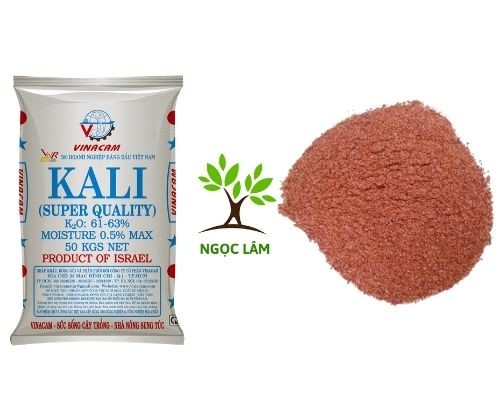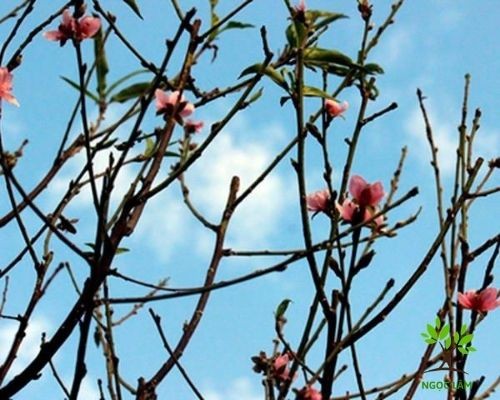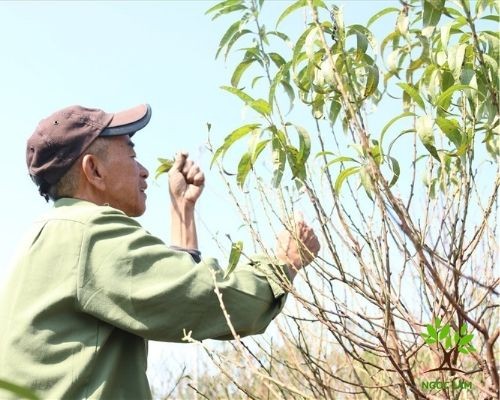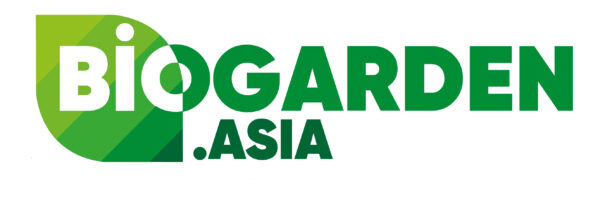No products in the cart.
NEWS
How to Make Peach Blossoms Bloom Faster for Tet: Essential Tips for a Prosperous New Year
In Northern and Central Vietnam, as Tet (Lunar New Year) approaches, peach blossoms (Hoa Đào) are an indispensable decoration. These vibrant flowers don’t just bring a festive, warm atmosphere; they are also considered a powerful symbol of prosperity, abundance, and good fortune for the coming year. It’s a long-held belief that the more abundant and timely the peach blossoms bloom on Tet, the more smooth-sailing and lucky the year will be for the household.
This cultural significance makes choosing a peach branch or tree with many promising buds a common practice. However, peach blossoms can be notoriously “unpredictable,” their blooming heavily dependent on weather conditions. This is especially true during the Tet season, when fluctuating and unusually cold weather can leave many branches with underdeveloped buds that fail to open in time for the celebration. If you find yourself in this predicament with Tet drawing near, don’t despair! There are several effective “last-minute” techniques you can employ to encourage those stubborn buds to burst into bloom. As experts at Biogarden.asia, we’ve compiled some proven methods to help you achieve a stunning display of peach blossoms just in time for the New Year.
 A close-up view of pink peach blossom buds and flowers on a branch, showing different stages of blooming, representing how to accelerate peach blossom flowering
A close-up view of pink peach blossom buds and flowers on a branch, showing different stages of blooming, representing how to accelerate peach blossom flowering
Utilize Potassium Fertilizer
Potassium (K) is a vital macronutrient for plant health, playing a crucial role in water and nutrient uptake, photosynthesis efficiency, and overall plant resilience, especially against environmental stress like cold weather. For flowering plants like peach trees, adequate potassium is essential for robust bud development and abundant, concentrated blooming.
Applying potassium fertilizer can significantly stimulate peach blossoms to open faster, particularly in regions experiencing prolonged cold spells. Potassium helps strengthen the plant’s ability to absorb water and nutrients even in less-than-ideal conditions and enhances its capacity to utilize available light during the often overcast winter days. This improved nutrient status directly fuels the development of flower buds.
For potted peach trees or branches nearing Tet with underdeveloped buds, a carefully measured application of potassium can make a big difference. Dissolve about 20g of potassium fertilizer (adjusting quantity based on the plant’s size and condition) in warm water and water the base of the plant every 3 days, or gently mix granular potassium into the soil around the base. Experienced growers often rely on this method to synchronize blooming.
 A hand holding a small amount of granular potassium fertilizer over potted peach blossom plants, illustrating potassium application for accelerated bloom
A hand holding a small amount of granular potassium fertilizer over potted peach blossom plants, illustrating potassium application for accelerated bloom
Try White Vinegar
White vinegar, a common household item, isn’t just for cooking and cleaning; it can also be beneficial for cut flowers, helping them stay fresh longer and, in the case of peach blossoms, encouraging them to open. Vinegar’s acidity can slightly lower the pH of the water, making it easier for the cut stems to absorb water and nutrients. It also helps inhibit bacterial growth in the water, which can clog the vascular tissues of the stem and prevent water uptake.
For cut peach branches, simply add a few drops of white vinegar to the water in the vase. Some people also mix in a little sugar along with the vinegar to provide energy. Change the water every few days to ensure a fresh supply of nutrients and maintain hygiene.
For potted peach trees, adding a few drops of white vinegar to your regular watering can might also help stimulate bud development and result in longer-lasting blooms. This approach supports the plant’s hydration and nutrient availability, contributing to faster and more sustained flowering.
 A small glass containing white vinegar next to a peach blossom branch in a vase, demonstrating the use of vinegar to encourage faster blooming
A small glass containing white vinegar next to a peach blossom branch in a vase, demonstrating the use of vinegar to encourage faster blooming
Use Warm Water
Peach blossoms are highly sensitive to temperature. Cold temperatures delay blooming, while warmer temperatures accelerate it. A simple yet effective way to encourage delayed peach buds to open is by using warm water.
For peach trees planted in the garden or large pots that are blooming late due to cold weather (temperatures consistently below 10°C for more than 5 days in early December Lunar calendar), a common horticultural practice involves withholding water for 3-4 days, then watering thoroughly with warm water (around 40-50°C) 2-3 times a day around the base. This temperature shock can signal the plant that conditions are favorable for blooming. Gardeners might also cover the trees with plastic sheeting or set up electric lights at night to provide warmth and additional light, sometimes combining this with foliar fertilizers designed to boost flowering.
For cut peach branches that haven’t bloomed in time, a traditional method is to sear the cut end briefly with a flame or dip it in very hot water (around 70-80°C) immediately after cutting. This seals the end, preventing sap leakage and preserving stored energy. If buds still aren’t opening, place the branch in a vase filled with warm water (30-40°C). Remember to change the water daily to keep it clean and effective.
For potted peach trees at home, gently watering the soil with warm water, or even misting the buds and leaves with warm water, can help raise the ambient temperature around the buds and encourage them to open. Ensure the soil remains consistently moist but avoid overwatering, which can lead to root rot and kill the plant. Placing the potted tree in a sunny, sheltered spot away from strong drafts will further support blooming when using warm water methods. With consistent application of warm water and favorable light, you should see buds swelling and opening within just a few days.
Provide Adequate Light
Light is a fundamental requirement for photosynthesis, the process by which plants produce energy. Sufficient light is crucial for the development of healthy flower buds and vibrant blooms. Like most flowering plants, peach blossoms thrive in light and will bloom faster and more beautifully when they receive enough of it.
If your peach branches or tree are not blooming, ensure they are placed in the brightest location possible. Position them near a sunny window, on a balcony, or in a spot that receives direct sunlight for several hours a day.
In periods of prolonged overcast or cold weather, natural light may be insufficient. To accelerate blooming, you can supplement natural light with artificial lighting. Placing an electric lamp near the plant, especially at night, can provide the extra light energy needed to stimulate bud development and opening. If cold temperatures persist (below 10°C for 5-7 days), potentially damaging buds, combining artificial light with warmth (like covering with plastic or using a small heater safely) can create a more favorable microclimate to protect buds and encourage them to bloom.
 A potted peach blossom tree placed indoors near a window, receiving natural light, representing the importance of light for accelerated bloom
A potted peach blossom tree placed indoors near a window, receiving natural light, representing the importance of light for accelerated bloom
Use Aspirin
Surprisingly, aspirin, a common pain reliever, can also be used to help peach blossoms bloom faster and last longer. Aspirin contains salicylic acid, a compound structurally similar to salicylic acid which is a plant hormone that plays a role in plant growth, defense mechanisms, and even flowering. Salicylic acid can help improve water uptake and reduce the production of ethylene, a plant hormone associated with ripening, aging, and wilting. By reducing ethylene production, aspirin can delay the wilting process and help flowers stay fresh for a longer period. The mineral salts in aspirin can also provide some nutritional support.
To use aspirin for peach blossoms: Crush a few aspirin tablets and dissolve them in warm water. Use this solution to water the base of potted peach trees or add it to the vase water for cut branches.
If Tet is only 1-2 days away and your cut branch’s buds are still closed, try searing the cut end over a flame or hot charcoal (be careful not to char it completely), then immediately place the branch in a vase of warm water mixed with a few dissolved aspirin tablets. Change the water daily.
For potted peach trees, you can mix crushed aspirin into the soil before planting or, as part of your care routine, water the plant with a warm water solution containing dissolved aspirin and urea (or another nitrogen source) to stimulate bud development and accelerate blooming.
 Several white aspirin tablets next to a glass of water, illustrating the use of aspirin to help peach blossoms bloom faster
Several white aspirin tablets next to a glass of water, illustrating the use of aspirin to help peach blossoms bloom faster
Incorporate Vitamin B1
Vitamin B1, also known as thiamine, is a vitamin crucial for human health, but it also has beneficial effects on plants. While not a primary fertilizer nutrient, B1 can act as a growth stimulant, particularly aiding in root development and reducing transplant shock. Healthy roots are essential for efficient nutrient and water absorption, which indirectly supports bud development and flowering. B1 can also help plants cope with stress, such as the stress of being cut or moved indoors.
Using Vitamin B1 can be another effective way to encourage your peach blossoms to bloom faster before Tet and help the blooms last longer.
For cut peach branches, crush a few B1 tablets and dissolve them in warm water. Add this solution to the vase water. Change the water daily.
For potted peach trees, you can mix crushed B1 tablets into the soil before planting. After planting, watering the base daily with a solution of B1 dissolved in warm water can help stimulate root growth and overall plant vigor, thereby encouraging buds to develop and bloom quickly for the Tet season.
 A hand holding a bottle of liquid Vitamin B1 solution near a potted plant, demonstrating the use of B1 for accelerating plant growth and bloom
A hand holding a bottle of liquid Vitamin B1 solution near a potted plant, demonstrating the use of B1 for accelerating plant growth and bloom
Ensure Clean Vases and Pots
Regardless of the type of flower, including peach blossoms, keeping the vase or pot clean is fundamental to ensuring the flowers stay fresh longer and encouraging buds to open. Before arranging branches or ensuring a potted plant is ready for display, make sure the container is thoroughly cleaned.
Wash the vase or pot well to remove any residue from soap, previous plants, or slimy buildup. Chemical residues from cleaning agents can harm the plant or cut branch, causing it to wilt faster. For cut branches, also gently wash off any mud or dirt clinging to the stem ends. For both cut branches and potted plants, using fresh, clean water (and changing the water daily for cut branches) is essential for proper hydration and nutrient uptake. A clean environment prevents the growth of bacteria and fungi that can clog the stem’s vascular system, hindering water flow to the buds and flowers.
Practice Leaf Stripping (Tuốt lá)
Leaf stripping is a traditional and crucial technique used by peach growers to control the blooming time of peach trees. Naturally, peach trees shed their leaves in winter, and bud development occurs after leaf fall. Left to nature, this might happen too late for the Tet celebration. By manually stripping the leaves at a specific time, growers force the tree to redirect its energy from maintaining foliage to developing flower buds.
Experienced growers time leaf stripping precisely based on the peach variety and the expected weather conditions. For example, for certain common varieties, stripping might occur 45-50 days before Tet, while others might require it 50-60 or even 85-90 days in advance. Adjusting the timing is key: strip later in warmer years and earlier in colder years. The goal is to concentrate the plant’s energy on bud formation, leading to a more abundant, uniform, and timely bloom.
What if you’ve purchased a peach tree or branch for Tet, and it’s close to the holiday, but it still has many leaves and undeveloped buds? In this case, you can perform supplementary leaf stripping. Gently remove the remaining leaves by hand. The goal is to eliminate the leaves’ demand for energy and nutrients, forcing the plant to focus on the existing buds.
When stripping leaves, be very careful not to damage the small flower buds located in the leaf axils (where the leaf stem meets the branch). Pinch or pull each leaf individually from the base, avoiding stripping downwards along the branch, which can injure the buds. After stripping, you can apply a foliar fertilizer (like those high in phosphorus and potassium for blooming) or water the plant with a warm water and potassium solution as mentioned earlier. This helps support the newly prioritized bud development, encouraging them to grow larger, bloom thicker, and display richer colors.
 A person's hands gently stripping leaves from a peach branch, focusing on not damaging the flower buds, illustrating the leaf stripping technique
A person's hands gently stripping leaves from a peach branch, focusing on not damaging the flower buds, illustrating the leaf stripping technique
Peach blossoms are a vibrant symbol of Tet, bringing joy and hopes for prosperity. However, unpredictable weather can sometimes mean your beautiful peach tree or branch might not bloom exactly when you want it to. If you find yourself in this situation, don’t be discouraged. By applying some of these time-tested techniques used by experienced gardeners, you can help stimulate those latent buds and ensure a spectacular display of peach blossoms just in time for the New Year. Experiment with these methods – utilizing the power of potassium, the acidity of vinegar, the warmth of water, the energy from light, the hormonal effects of aspirin, the boost from B1, maintaining cleanliness, and strategically stripping leaves – to coax your peach blossoms into opening. We hope these tips from Biogarden.asia help you achieve a beautiful and auspicious peach blossom display for a truly wonderful Tet celebration.



